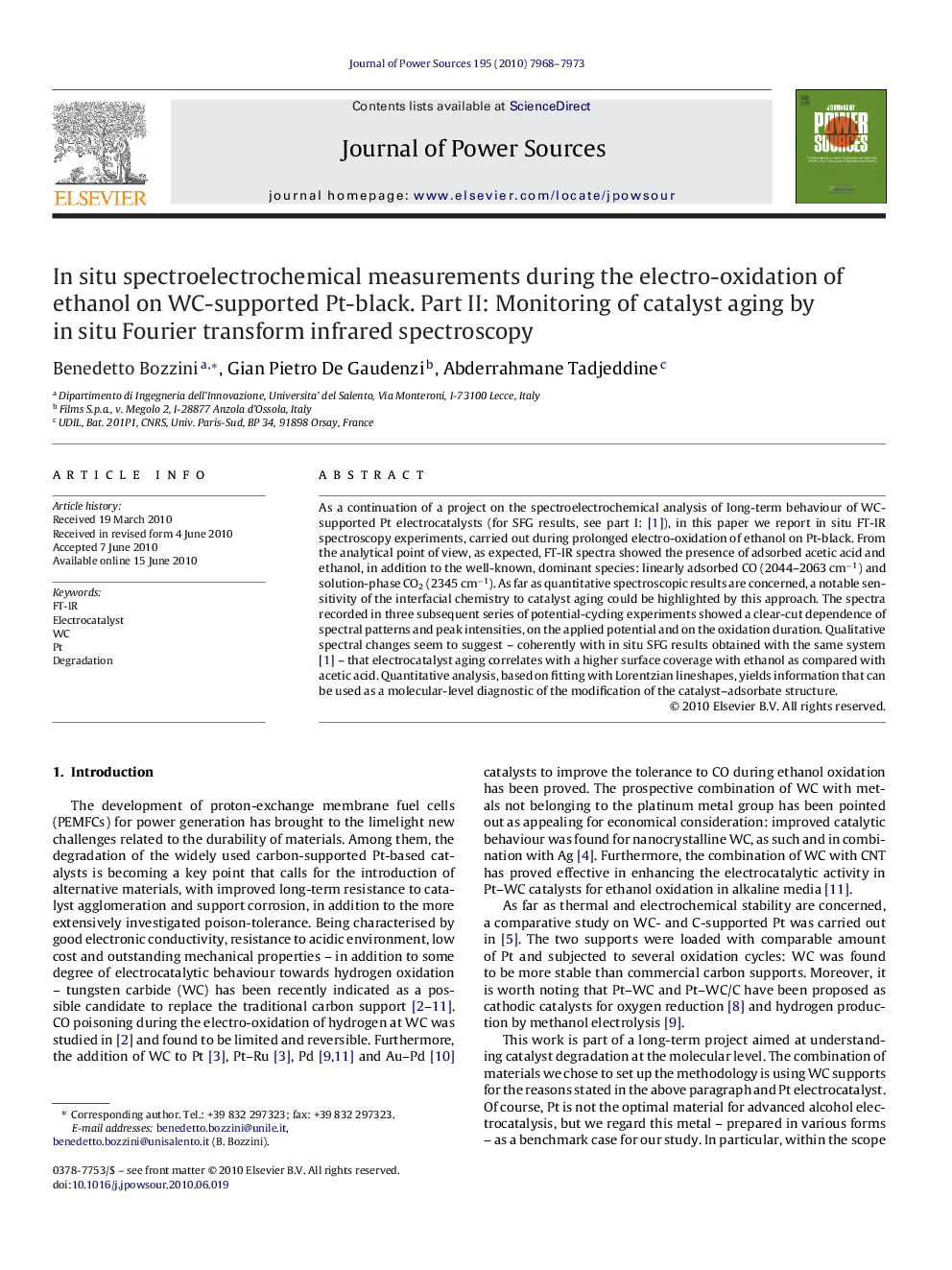| Article ID | Journal | Published Year | Pages | File Type |
|---|---|---|---|---|
| 1293640 | Journal of Power Sources | 2010 | 6 Pages |
As a continuation of a project on the spectroelectrochemical analysis of long-term behaviour of WC-supported Pt electrocatalysts (for SFG results, see part I: [1]), in this paper we report in situ FT-IR spectroscopy experiments, carried out during prolonged electro-oxidation of ethanol on Pt-black. From the analytical point of view, as expected, FT-IR spectra showed the presence of adsorbed acetic acid and ethanol, in addition to the well-known, dominant species: linearly adsorbed CO (2044–2063 cm−1) and solution-phase CO2 (2345 cm−1). As far as quantitative spectroscopic results are concerned, a notable sensitivity of the interfacial chemistry to catalyst aging could be highlighted by this approach. The spectra recorded in three subsequent series of potential-cycling experiments showed a clear-cut dependence of spectral patterns and peak intensities, on the applied potential and on the oxidation duration. Qualitative spectral changes seem to suggest – coherently with in situ SFG results obtained with the same system [1] – that electrocatalyst aging correlates with a higher surface coverage with ethanol as compared with acetic acid. Quantitative analysis, based on fitting with Lorentzian lineshapes, yields information that can be used as a molecular-level diagnostic of the modification of the catalyst–adsorbate structure.
